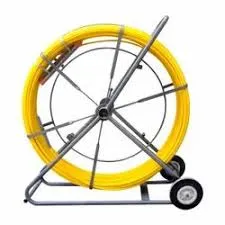
-
 Afrikaans
Afrikaans -
 Albanian
Albanian -
 Amharic
Amharic -
 Arabic
Arabic -
 Armenian
Armenian -
 Azerbaijani
Azerbaijani -
 Basque
Basque -
 Belarusian
Belarusian -
 Bengali
Bengali -
 Bosnian
Bosnian -
 Bulgarian
Bulgarian -
 Catalan
Catalan -
 Cebuano
Cebuano -
 Corsican
Corsican -
 Croatian
Croatian -
 Czech
Czech -
 Danish
Danish -
 Dutch
Dutch -
 English
English -
 Esperanto
Esperanto -
 Estonian
Estonian -
 Finnish
Finnish -
 French
French -
 Frisian
Frisian -
 Galician
Galician -
 Georgian
Georgian -
 German
German -
 Greek
Greek -
 Gujarati
Gujarati -
 Haitian Creole
Haitian Creole -
 hausa
hausa -
 hawaiian
hawaiian -
 Hebrew
Hebrew -
 Hindi
Hindi -
 Miao
Miao -
 Hungarian
Hungarian -
 Icelandic
Icelandic -
 igbo
igbo -
 Indonesian
Indonesian -
 irish
irish -
 Italian
Italian -
 Japanese
Japanese -
 Javanese
Javanese -
 Kannada
Kannada -
 kazakh
kazakh -
 Khmer
Khmer -
 Rwandese
Rwandese -
 Korean
Korean -
 Kurdish
Kurdish -
 Kyrgyz
Kyrgyz -
 Lao
Lao -
 Latin
Latin -
 Latvian
Latvian -
 Lithuanian
Lithuanian -
 Luxembourgish
Luxembourgish -
 Macedonian
Macedonian -
 Malgashi
Malgashi -
 Malay
Malay -
 Malayalam
Malayalam -
 Maltese
Maltese -
 Maori
Maori -
 Marathi
Marathi -
 Mongolian
Mongolian -
 Myanmar
Myanmar -
 Nepali
Nepali -
 Norwegian
Norwegian -
 Norwegian
Norwegian -
 Occitan
Occitan -
 Pashto
Pashto -
 Persian
Persian -
 Polish
Polish -
 Portuguese
Portuguese -
 Punjabi
Punjabi -
 Romanian
Romanian -
 Russian
Russian -
 Samoan
Samoan -
 Scottish Gaelic
Scottish Gaelic -
 Serbian
Serbian -
 Sesotho
Sesotho -
 Shona
Shona -
 Sindhi
Sindhi -
 Sinhala
Sinhala -
 Slovak
Slovak -
 Slovenian
Slovenian -
 Somali
Somali -
 Spanish
Spanish -
 Sundanese
Sundanese -
 Swahili
Swahili -
 Swedish
Swedish -
 Tagalog
Tagalog -
 Tajik
Tajik -
 Tamil
Tamil -
 Tatar
Tatar -
 Telugu
Telugu -
 Thai
Thai -
 Turkish
Turkish -
 Turkmen
Turkmen -
 Ukrainian
Ukrainian -
 Urdu
Urdu -
 Uighur
Uighur -
 Uzbek
Uzbek -
 Vietnamese
Vietnamese -
 Welsh
Welsh -
 Bantu
Bantu -
 Yiddish
Yiddish -
 Yoruba
Yoruba -
 Zulu
Zulu


Oktoba . 16, 2024 20:41 Back to list
20 ground rod
Understanding the Importance of a 20% Ground Rod in Electrical Systems
In the realm of electrical engineering and safety, grounding systems are vital components that protect both equipment and individuals. One aspect of grounding systems is the use of ground rods, which serve as conductive pathways that allow electrical charges to dissipate safely into the earth. A common specification for these rods is the “20% ground rod,” which refers to a specific standard or effective grounding system configuration in various applications. Understanding what a 20% ground rod entails is crucial for ensuring both compliance and safety.
Understanding the Importance of a 20% Ground Rod in Electrical Systems
The term “20% ground rod” usually refers to a configuration where the resistance is reduced to a certain threshold—specifically that the grounding system meets a standard where at least 20% of the total grounding effectiveness is achieved through the use of ground rods. The goal is to ensure that the grounding system is efficient in conducting fault currents and dissipating electrical charges safely into the earth. This 20% benchmark usually implies that grounding electrodes must collectively exhibit low resistance, which is essential for the proper functioning of the electrical system.
20 ground rod

To realize this 20% effectiveness, it is vital to consider several factors, including soil characteristics, moisture content, and the depth at which the rod is installed. For instance, rocky or dry soil can significantly impede the performance of a ground rod, as these conditions may lead to higher resistance. To enhance efficiency, multiple ground rods may be installed in a series or parallel configuration, thereby distributing the load and improving the overall grounding effectiveness.
Moreover, local electrical codes and regulations often dictate the required resistance levels for ground systems, which may corroborate the 20% ground rod standard. Compliance with these regulations not only ensures the safety of the electrical installations but also protects the integrity of devices connected to the system. In cases of inspections or certifications, demonstrating adherence to established grounding criteria, such as the 20% standard, is essential for obtaining necessary approvals.
Maintaining a reliable grounding system is also a proactive step in preventing damage from electrical faults. Regular testing and maintenance checks can help ascertain the effectiveness of the ground rod and the associated grounding system. If the readings show that the resistance is above acceptable limits, it may indicate that the ground rods require replacement or additional units need to be installed.
In conclusion, the concept of the 20% ground rod serves as a crucial guideline in ensuring effective grounding practices in electrical systems. By understanding and implementing this standard, engineers and technicians can enhance system safety, mitigate risks, and ensure compliance with regulatory standards, ultimately leading to a safer working environment for all.
Latest news
The Unique Design of Cable Socks
NewsJun.04,2025
Swivel Connectors in Industrial Automation
NewsJun.04,2025
Safety Features of Link Sticks
NewsJun.04,2025
How to choose the best cable pulling winch for sale
NewsJun.04,2025
Fish tape safety precautions
NewsJun.04,2025
Essential Maintenance Tips for Cable Pulling Tools
NewsJun.04,2025











